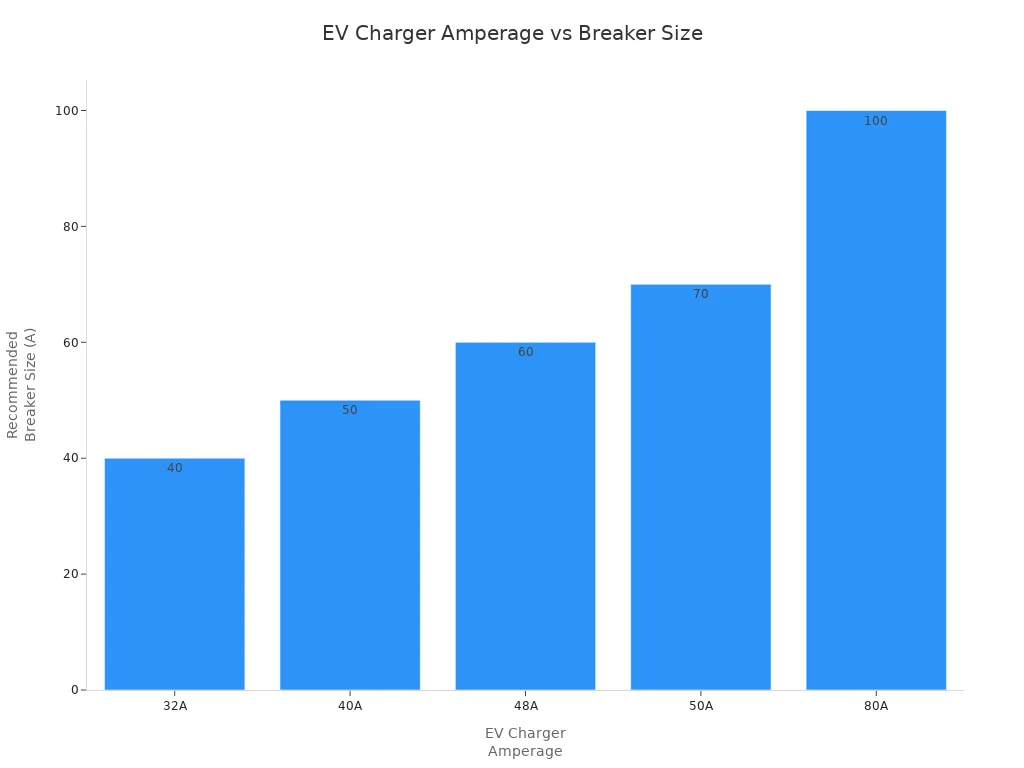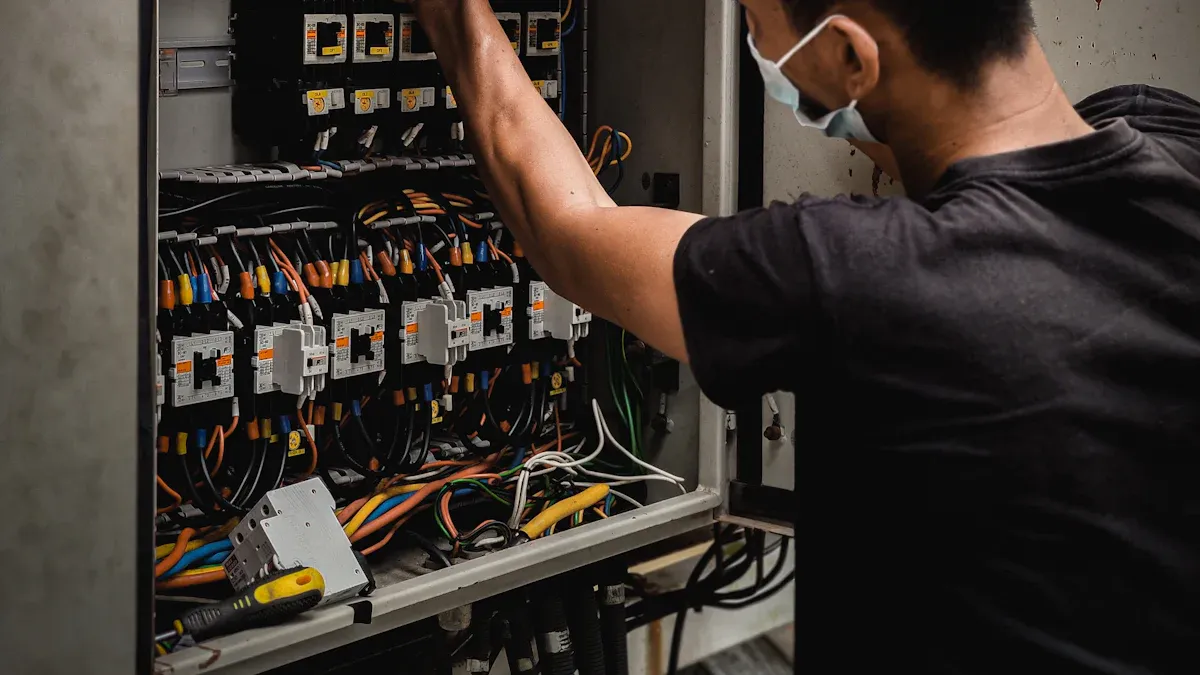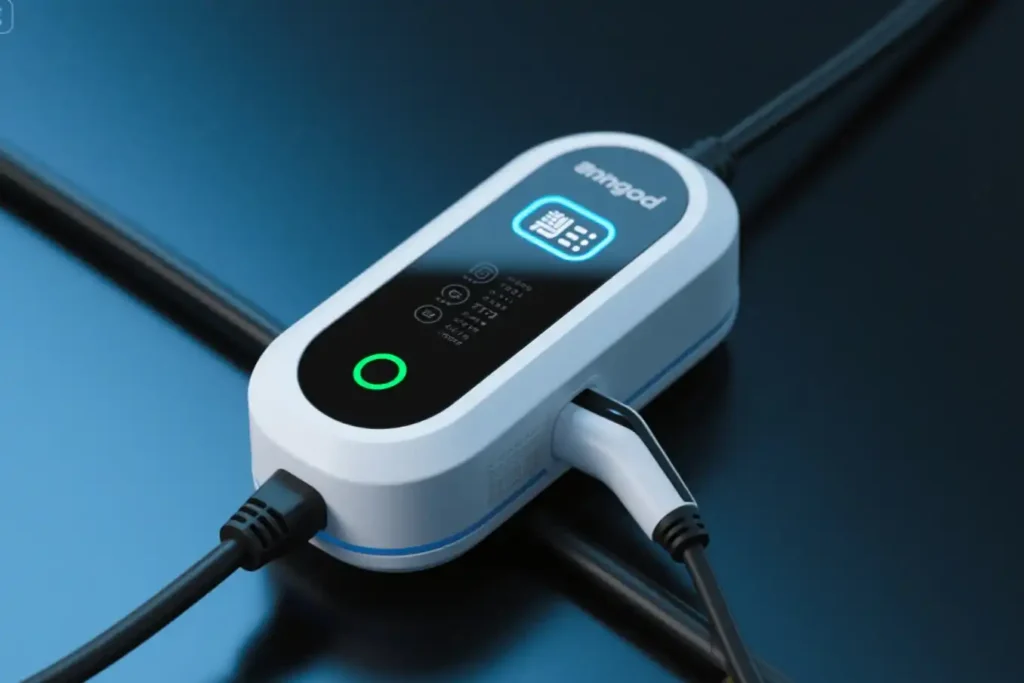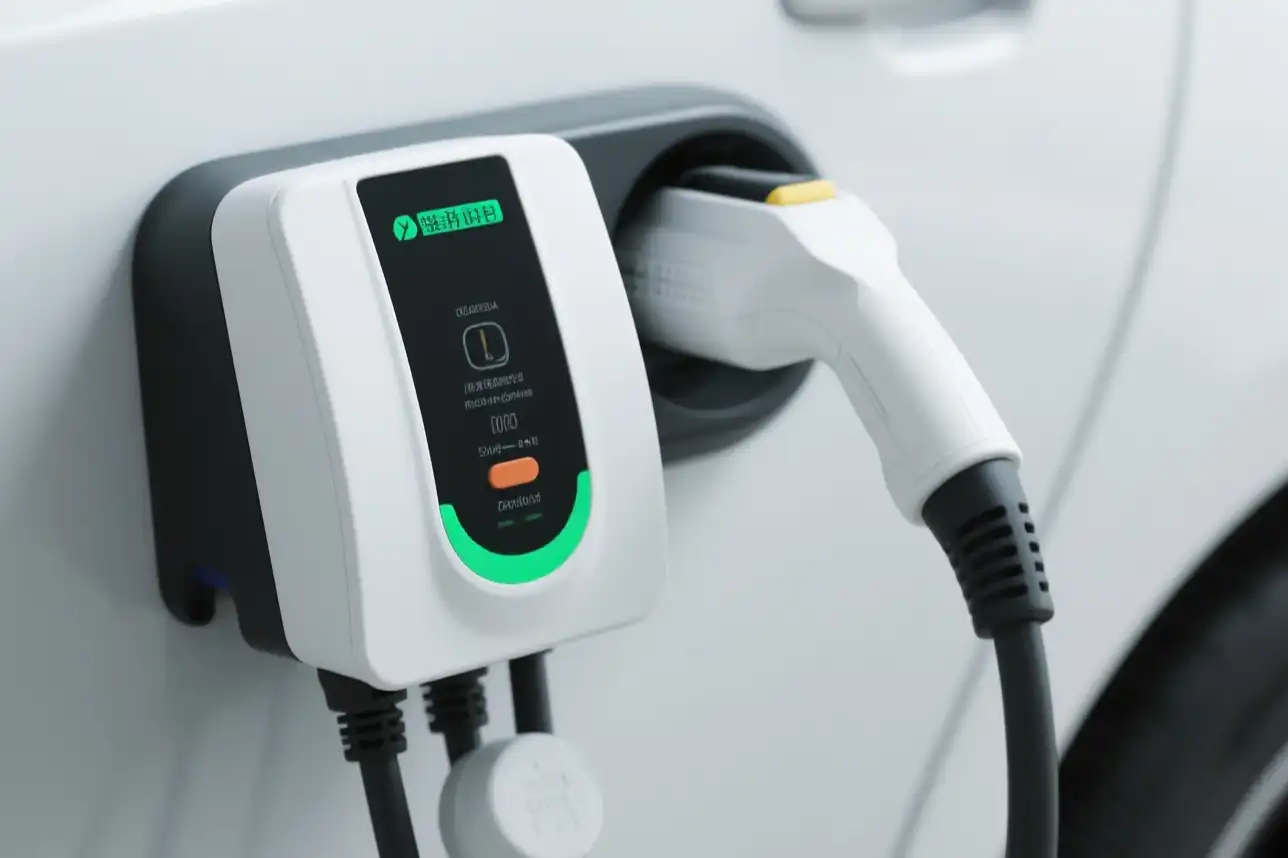Choosing the right electric vehicle charger circuit breaker is important. You must pick a breaker that is 125% of the charger’s rated current. This helps stop overheating and ensures safety compliance. Most Level 2 chargers require a double-pole electric vehicle charger circuit breaker. Around 3% of single-family homes may need a panel upgrade, and about 10% of multi-family homes might need one as well. Always consult a licensed electrician to verify if your home is safe and ready for the installation.
Key Takeaways
- Pick a circuit breaker that is 125% of your EV charger’s current. This helps stop overheating and keeps things safe.
- Use a double-pole breaker for most Level 2 chargers. It can turn off both hot wires at the same time.
- Look at your electrical panel’s space and power before you start. Upgrade it if you need more room or power. This helps stop overloads.
- Make sure the wire size fits the breaker and charger. Add GFCI protection to help stop electric shocks.
- Always get permits and hire a licensed electrician. This makes sure your setup is safe, legal, and covered by insurance.
Electric Vehicle Charger Circuit Breaker Sizing
Breaker Size
When you choose an electric vehicle charger circuit breaker, you must follow the National Electrical Code (NEC) rules. The NEC treats electric vehicle chargers as continuous loads. This means the charger can run for three hours or more at a time. Because of this, the code requires you to size the breaker at 125% of the charger’s rated current. This rule helps prevent overheating and keeps your home safe.
Why does the 125% rule matter?
- NEC 625.41 says electric vehicle supply equipment (EVSE) is a continuous load.
- Overcurrent protection devices (OCPDs), like breakers, must be sized at 125% of the continuous load.
- This sizing helps the breaker handle the heat from long charging sessions.
- The rule also applies to the wires that connect your charger to the panel.
- Local inspectors may have extra requirements, so always check with them.
Most Level 2 chargers use 240 volts and draw a lot of current. You need a double-pole breaker for these chargers. A double-pole breaker connects to both hot wires in your panel. This setup lets the breaker shut off both wires at once, which is safer and meets code.
- Level 2 chargers need 240V split-phase power, which uses two hot wires.
- Double-pole breakers protect both wires and disconnect them together.
- This design keeps you and your home safe during charging.
Sizing Examples
You can use a simple formula to find the right electric vehicle charger circuit breaker size:
Breaker Size = Charger Amperage × 1.25
Here is a table of common charger sizes and the recommended breaker for each:
| EV Charger Amperage | Recommended Breaker Size |
|---|---|
| 32A | 40A |
| 40A | 50A |
| 48A | 60A |
| 50A | 70A |
| 80A | 100A |
For example, if your charger draws 40 amps, you need a 50-amp breaker. If you have a 48-amp charger, you should use a 60-amp breaker. These sizes follow the 125% rule and help prevent nuisance tripping.

Tip: Breakers larger than 50 amps often require hardwiring the charger. Plug-in options usually stop at 50 amps.
When you select an electric vehicle charger circuit breaker, always match the breaker size to the charger’s needs. Use a double-pole breaker for most Level 2 chargers. This approach keeps your installation safe and code-compliant.
Key Factors for Breaker Selection
Panel Capacity
You must check if your panel can handle more power. Most homes have panels rated at 100 or 200 amps. If your charger is over 40 amps, your panel should be at least 125 amps. This keeps your home safe and stops overloading. If your panel is too small, you might need to upgrade it first. Always check if there is space for a double-pole breaker. A licensed electrician can help you know if your panel is ready.
Wiring and Outlets
Picking the right wire size is important for safety. For a 50-amp breaker, you usually need 6 AWG copper wire. This wire helps stop overheating and keeps things safe. The National Electrical Code says each charger needs its own circuit. No other devices can use the same wires. Good grounding is needed to avoid electric problems. Copper wires are better than aluminum because they carry power more safely.
| Wire Gauge (Copper) | Breaker Size (Amps) | Notes |
|---|---|---|
| 6 AWG | 30A – 60A | Standard for most Level 2 EV chargers |
| 4 AWG | 85A | Used for higher-capacity chargers |
| 3 AWG | 100A | For very high-power installations |
GFCI Protection
GFCI protection helps keep you safe from shocks. The 2023 National Electrical Code says all EV charging outlets need GFCI protection. This rule is for NEMA 14-50 outlets, which many chargers use. GFCI breakers notice small changes in current and turn off power fast. This helps stop injuries, especially in wet places. Some chargers have GFCI built in, but you still need protection at the outlet or breaker. Using a GFCI breaker with your electric vehicle charger circuit breaker makes your home safer.
Installation and Code Compliance

Permits and Inspections
Before you put in an electric vehicle charger circuit breaker, you need permits. Permits make sure your setup follows safety rules and keeps your home safe. Most cities have steps you must follow:
- Ask a licensed electrical contractor to see if your home can use a Level 2 charger.
- Fill out forms online, like the Residential EV Charger Request Form.
- Your contractor gets an electrical permit through the city’s e-Permit system.
- After the work is done, set up an inspection with the building department.
- If you pass, the city says your setup is good and may put in a new meter.
Note: If you do not need a panel upgrade, you might get an express permit. This makes things faster.
Permits and inspections are not just rules. They help protect your home insurance. If you skip permits, your insurance might not pay for fire or accident damage. Work without permits can also lower your home’s value and cause fines. Always look at your insurance policy and tell your provider about your new charger.
| Requirement Type | Details |
|---|---|
| Electrical Permit | Needed for all EV charger installations. |
| Inspection | Required after installation to ensure safety and code compliance. |
| Insurance Coverage | May be denied if installation is not permitted and inspected. |
| Property Value | Unpermitted work can reduce resale value. |
Getting a permit usually takes about a week. Some cities finish in a few days. Others take longer if you need upgrades.
Professional Help
It is best to hire a licensed electrician for this job. Electricians know how to check your panel, figure out loads, and put in the right circuit breaker. They match the breaker size to your charger and make sure your wires are safe. Many electricians learn extra skills for electric vehicle charger jobs. They also keep up with new codes and tools.
- Licensed electricians:
- See if your panel can handle the charger.
- Suggest upgrades if your system is old or too small.
- Make sure your setup follows all local codes and permit rules.
The price for a professional job changes. Most Level 2 charger installs cost $600 to $1,200. If you need a panel upgrade, it can cost up to $3,000. Permit and inspection fees add $50 to $500. These costs help keep your home safe and your setup legal.
Tip: Getting a pro to install your charger helps you feel safe. You know your electric vehicle charger circuit breaker is safe, follows the rules, and is covered by insurance.
Troubleshooting and Upgrades
Insufficient Panel
There are signs your panel cannot handle an electric vehicle charger circuit breaker. Look for these warning signs:
- Circuit breakers trip a lot, especially with big appliances.
- Lights flicker or get dim when you use the charger or other big things.
- You use many extension cords or power strips in your house.
- Some outlets do not work right or have burn marks.
- You smell burning, see sparks, or notice heat near the panel.
- The panel has rust, corrosion, or looks damaged inside.
- The panel is old, over 25 years, or only 100 amps or less.
- It is hard to find new breakers that fit your panel.
Tip: If you see any of these problems, stop using the charger. Call a licensed electrician right away. These issues can cause fires or damage your home.
Upgrade Options
If your panel cannot support a new electric vehicle charger circuit breaker, you have choices. Here are some common ways to fix the problem:
- Panel Upgrade:
You can get a new panel with more power, usually 200 amps. This gives you more room for new circuits and more power for your home. A licensed electrician will check your house, get permits, and put in the new panel safely. - Subpanel Installation:
You can add a subpanel just for your EV charger. This works if your main panel is full but still has enough total power. - Load Management Systems:
You can use smart devices to share power between your charger and other things. These systems help stop overloads and can save money. Some smart splitters let you use one 240V outlet for your charger and another device. - Lower-Amperage Chargers:
You can pick a charger that uses less power. These chargers need smaller breakers and wires, so you may not need a big upgrade. Charging will take longer, but you save money on installation.
| Upgrade Option | Benefits | Drawbacks |
|---|---|---|
| Panel Upgrade | Good for future needs, safer, reliable | Costs more at first |
| Subpanel Installation | Adds circuits without full upgrade | Needs enough main panel power |
| Load Management System | Saves money, stops overloads | May slow charging sometimes |
| Lower-Amperage Charger | Cheaper, easy to install | Slower charging |
Note: Always hire a licensed electrician for upgrades. Regular checks and care keep your system safe and working well.
To choose the right electric vehicle charger circuit breaker, you should:
- Check your panel’s capacity and space for a new breaker.
- Find out your charger’s voltage and amperage needs.
- Pick a breaker rated at least 125% of the charger’s current.
- Match the wire size to the breaker and charger.
- Use the correct outlet and add GFCI protection.
- Follow all local codes and get permits.
- Hire a licensed electrician for safe installation.
Following these steps helps prevent overheating, fire risks, and frequent breaker trips. Using the correct electric vehicle charger circuit breaker and proper wiring keeps your charging setup safe and reliable. If you feel unsure about your panel or breaker sizing, always ask a professional for help.
FAQ
What size circuit breaker do you need for a Level 2 EV charger?
You need a breaker rated at 125% of your charger’s maximum current. For example, a 40-amp charger needs a 50-amp breaker. Always check your charger’s manual and ask a licensed electrician for advice.
What happens if you use the wrong breaker size?
If you use a breaker that is too small, it will trip often. If you use one that is too large, it may not protect your wires. This can cause overheating or fire. Always match the breaker to your charger and wire size.
What type of breaker should you use for EV charging?
You should use a double-pole breaker for most Level 2 chargers. This breaker connects to both hot wires and provides safe shutoff. Some chargers also need GFCI protection. Check your local code and charger instructions.
What should you do if your panel does not have enough space?
You can ask an electrician to install a subpanel or upgrade your main panel. You may also choose a lower-amperage charger. Always get professional help to keep your home safe.
See also
What Happens If Your Electric Vehicle Charger Lacks Surge Protection
High quality RCD for electric vehicle chargers
EV type residual current device
What You Need to Know About Commercial EV Charging Costs




